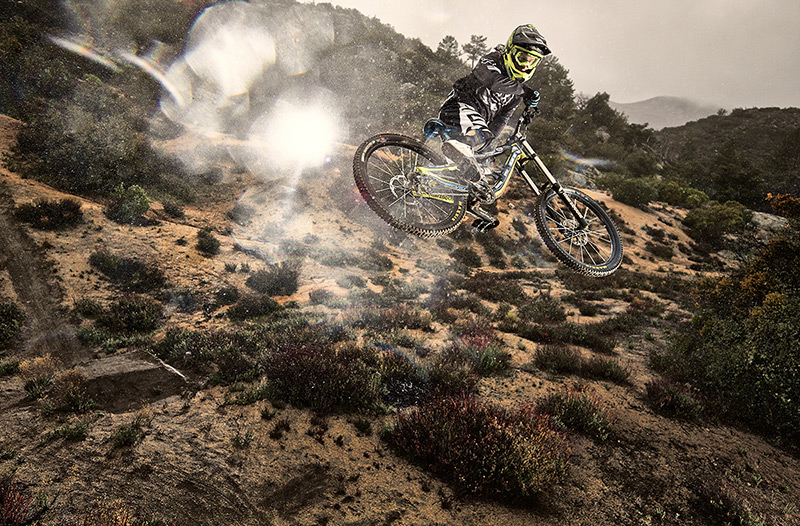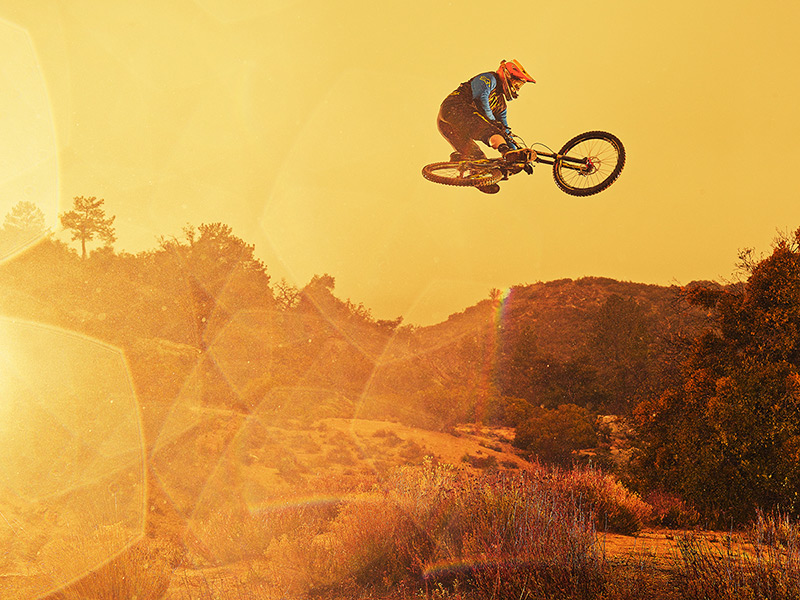Adventure Sports Photographer Tim Kemple was one of the only photographers in the world who was lucky enough to try out the new Phase One IQ250 that was just announced earlier today. Check out the behind the scenes video, but also read the full article for my interview with Tim, where he shares his thoughts on the system, as well as what it's like to beta test cameras.
Fstopper's own Douglas Sonders first broke the info on the IQ250, so if you haven't read his post with the camera specs and technical information from the press release, check his article out first.
Tim tells me that in November Phase One asked if he would, "be interested in shooting with a new digital back that was super secret. After signing NDAs and conference calls in quiet places, I learned that the back was the IQ250 and was the first medium format CMOS back ever."
Once Tim received the camera, he got in touch with world renowned mountain bikers Kyle Strait and Tyler McCaul, and proceeded to set up a shoot to capture some stills of them doing tricks off a dirt ramp.
"I'd had this idea to shoot mountain biking from an RC Heli to get a really unique perspectives. That idea almost worked... Until the Heli crashed. But overall it was pretty amazing and the images we shot are currently being used as the IQ250 launch material."
Tim had previously worked with the Phase One IQ180, traveling all over the world and shooting in some remote and rugged conditions to capture his amazing images. Some of his work was so sweet that I even posted about it here on fstoppers.
https://www.youtube.com/watch?feature=player_embedded&v=WtzUP3cVOxg
On why he uses Phase One cameras, Tim replied, "People ask why I would shoot with it and it boils down to 2 things for me... Image quality and high speed flash syncs. The flash syncs are HUGE. 1/1600 at all flash power, all the time."
I asked Tim what he thought of the new IQ250 compared to his IQ180, and what he might use it for. The biggest factor for Tim is that because it is now using a CMOS sensor, the image quality at an ISO of 6400 is much better than before.
"A bunch of things were new to me because I have been shooting with the older IQ1 series back so the IQ250 has all of the features of any IQ2 back. But the big deal really is the fact that it's a medium format CMOS sensor. The image quality at ISO 6400 is better than anything else I've shot. They've also got live view rocking on the IQ250 now -- that feature wasn't enabled yet on the versions I shot with."
So what does this mean for a professional like Tim? How is this gong to change his approach or workflow? Tim's answer illustrates how he sees cameras for the creative tools they are.
"I don't ever think a camera is going to change what I do, but they can change how I look at a scene. In my photography that means capturing images that are unique, other worldly, and just jaw dropping to look at. So the combination of the highspeed flash sync and high ISO is the game changer for the work I do. Yeah it's pretty cool."

I wondered what else Tim or other photographers stand to gain with the new IQ250, so I was curious what Tim thought might be coming out soon from people who are planning to get their hands on one.
"The new back can do hour long exposures. Imagine that, looking at (and lighting?) the world in hour long exposures. I've been wanting to do medium format timelapse– The IQ250 never fills the buffer as long as your card is fast enough you can shoot until you run out of storage, just hold down the shutter."

Lastly, Tim had some fun information to share about being asked to beta test cameras and remain hush-hush about it.
"You know being involved in projects like this are pretty fun. I'd hate to do it all the time -- being vague with my crew about what we are really working on and why the gear is covered in black tape. But getting to work directly with the product and software designers is really amazing. There's just so much going into the design of these products yet a single person's opinion can have a profound impact. The team at Phase One has to be one of most psyched and fun groups I've worked with. I threw some ideas at them about products I'd love to see... We'll just have to wait a few months before we see what they really think of my ideas!"
You can see more videos about the new Phase One IQ250 on their site.
Photos in this article were taken by Tim Kemple. To see more of his work, check out his website or follow him on Instagram.






The 6 blade lens flare is interesting.. Kudos to P1 for bring this to the market,its a great back,Personally I would hold out for the full 645 version which will surely arrive at some point.
Sony are really on a mission to own the sensor business,that 1.2billion investment is starting to reap its rewards with this,the D800,D4 and A7R
This is clearly the same sensor as the New hassellblad 50c although I don't think the Blad has live view,wonder if it will pop up in the next version of the Leica S?
Its actually Phase Ones sensor and not a Sony/Hassy off shoot. (Phase One has been building their own sensors for years, and have recently merged with Mamiya).
Sorry Carnagex2000, that is 100% wrong. It is a Sony sensor, Phase One have never built their own sensors, They have been involved in the design, but not the manufacturing, that was Kodak/Trusense and more recently Dalsa. Oh and they bought Mamiya, that was no merger my dear fellow.
It's actually a 5 bladed flare and was created (intentionally) by water on the lens.
Yeah.. Silly mistake .. Clearly 5 blades.. Looks really good and a good idea,very nice images.
Thank you!
The D4 is Nikon's sensor. Sony did the D5100/7000, D600/610, and D800 sensors. That's why you see those same sensors in the Sony cameras (NEX 5, A7, A7R), but not the D4's sensor.
http://nikonrumors.com/2012/08/22/the-sensor-inside-the-d4-is-made-by-ni...
I was sure the A7R and the D800 had the same sensor but in a conversation with the woman who covers Sony's ambassador program, or whatever they call it, I mentioned that and she assured me it was not the same sensor. Do what you will with that info but I'd trust her knowledge on the subject even if they seem like they should be the same and are both made by Sony.
That's interesting, I wonder what the differences are - aside from the lack of a LPF.
Nikon D4 and Df cameras have a Sony sensor.
You planned everything "great"?
Just how much planning went into this shoot?
Looks like you and the boys were out on a lark-not a planned photoshoot with pro athletes. Or is that in keeping with the spirit of extreme sports?
Was there a medic on set? Head injuries aren't anything for a layman to handle.
Safety zones around the RC heli? That BTS crew seemed close (they ducked) to the line of flight.
Thanks for the info about the MF back and some nice shots.
Fair enough - it's not like there were 50 people on set, but there was a crew of about a dozen. As I'm sure you can appreciate much of what you do as a director or photographer on a shoot like this is guarantee the client a final product. Yes I could have waited for Tyler and Kyle to be available, and done this shoot with limited muscle -- BUT the reality was we had a day to get the shots in the bag (both motion and stills) and that requires more people and man power.
The fact that you had no redundancy on your rope set up (over the waterfall) made my cringe. I know your not shock loading the system but I know from mistakes what happens in the event of equipment failure...with no redundancy.
We all have personal limits to the risks we are willing to take to get a shot. For example I have friends that won't get into a helicopter because it's too risky. For me, hanging on a single static rope is something I do on a regular basis and feel very comfortable with. My additional experience with rigging high tension 'slack lines' made the whole set up safe enough for me, but I can understand why someone else may want a backup.
SO THE BEST ACTION SHOTs IN THIS VIDEO IS MADE BA GO PRO??
capitol letters slip ,)